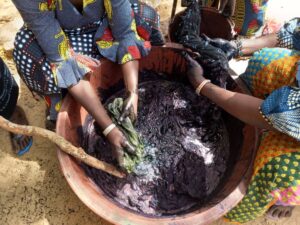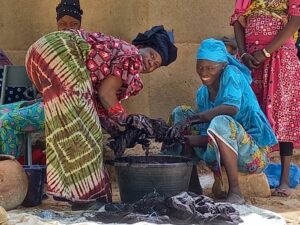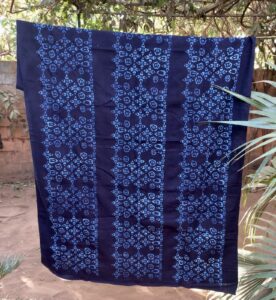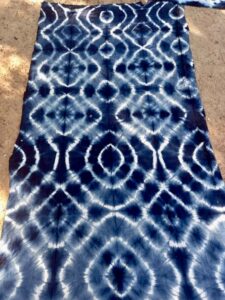
by Massitan Coulibaly, member of the CAPID Marketing Strategy Committee.
Mali is a country of great cultural and ethnic diversity. The Pays Dogon is a region located in the center of the country, stretching from the Falaise de Bandiagara to the southwest of the Boucle du Niger. Like other ethnic groups in Mali, the Dogon people have their own traditions, customs, and mores.

Dogon craftsmen are renowned for their sculptures and textiles. Their traditional clothing is mainly based on indigo textiles, woven from local cotton and tinted with a plant that grows in the region and is used by local dyers to give the color blue. The Dogon indigo cotton loincloth or wrapper is worn not only by Dogon women and men but by many citizens of Mali.
Each sewn indigo pagne pattern contains symbols that have a particular meaning, identified with a specific village or locality. This indigo cloth below is the Yougourou pattern, which means “snake bone”.

The stitched indigo pattern below is Yourgou, the Dogon term for “the Way”. This textile was produced by dyers in the Sangha commune during a training course offered by the CAPID, the artisanal cooperative for the promotion of Dogon indigo. Training was made possible thanks to the support of the United States Embassy in Bamako.
In recent years, new techniques have been introduced such as tie-dye and stamped patterns. These methods are considerably less time-consuming and have become increasingly popular among the younger generation of indigo dyers.


